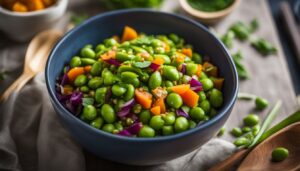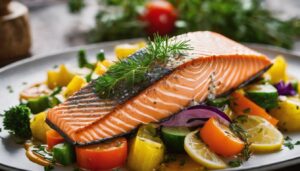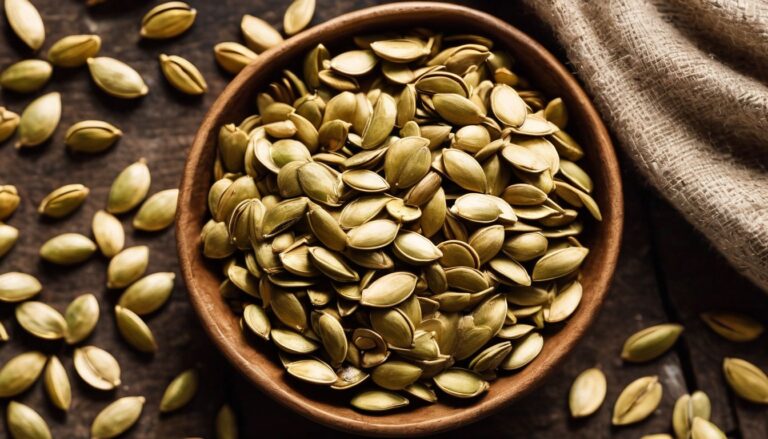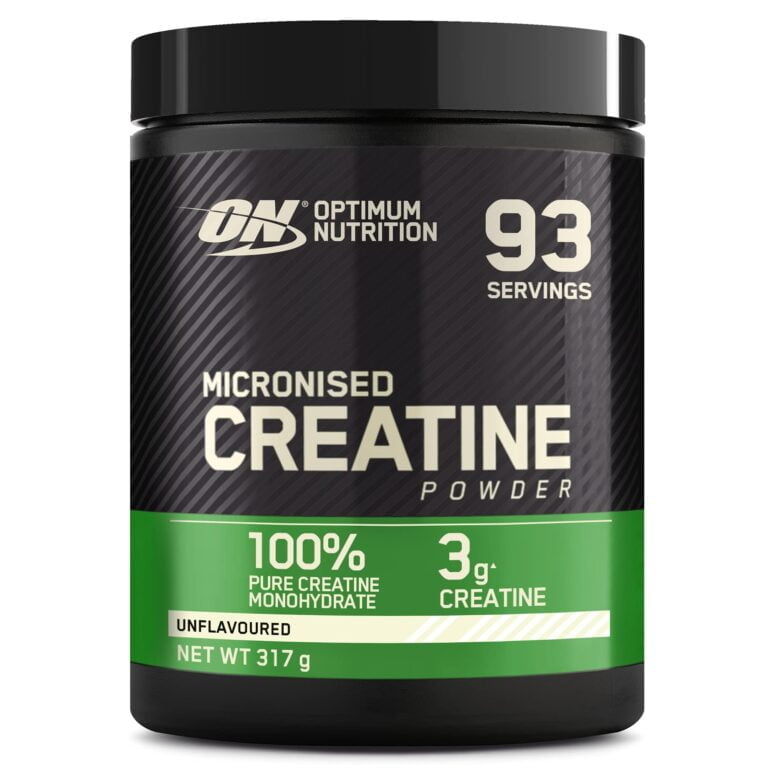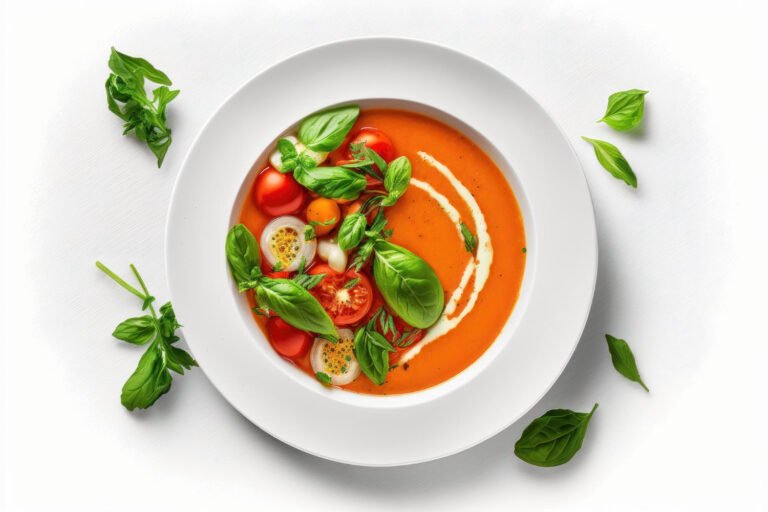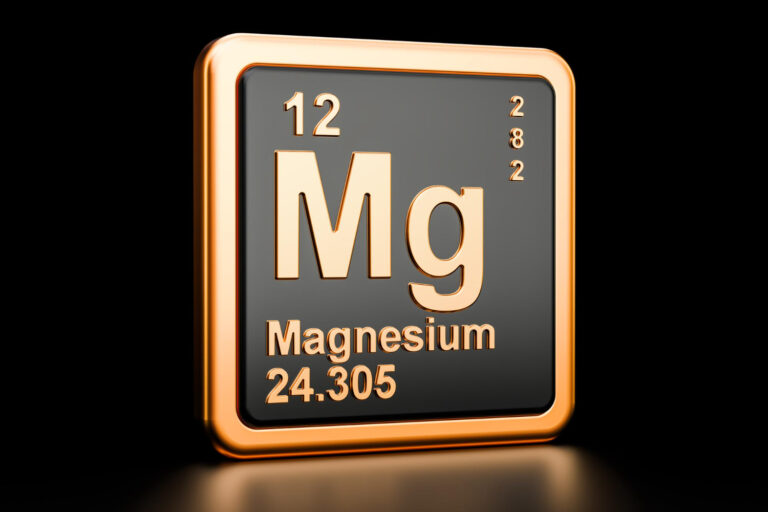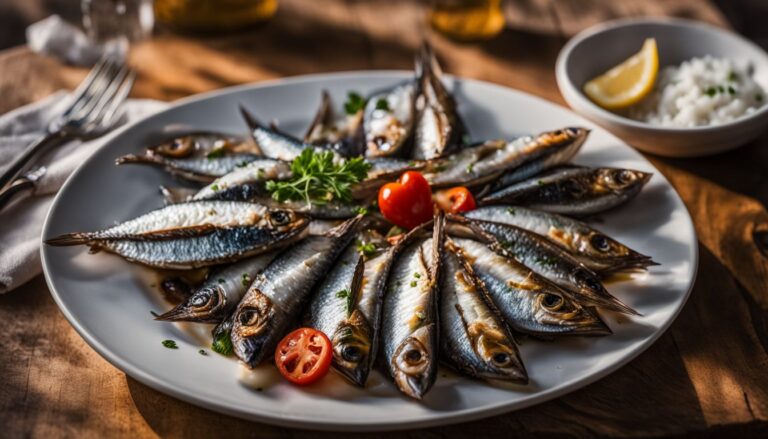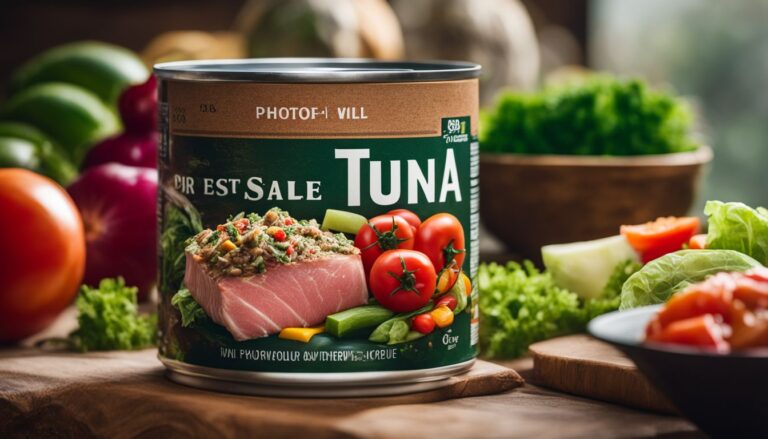Chicken Breast: A Healthy Addition to Your Diet – Discover its Nutritional Facts and Health Benefits
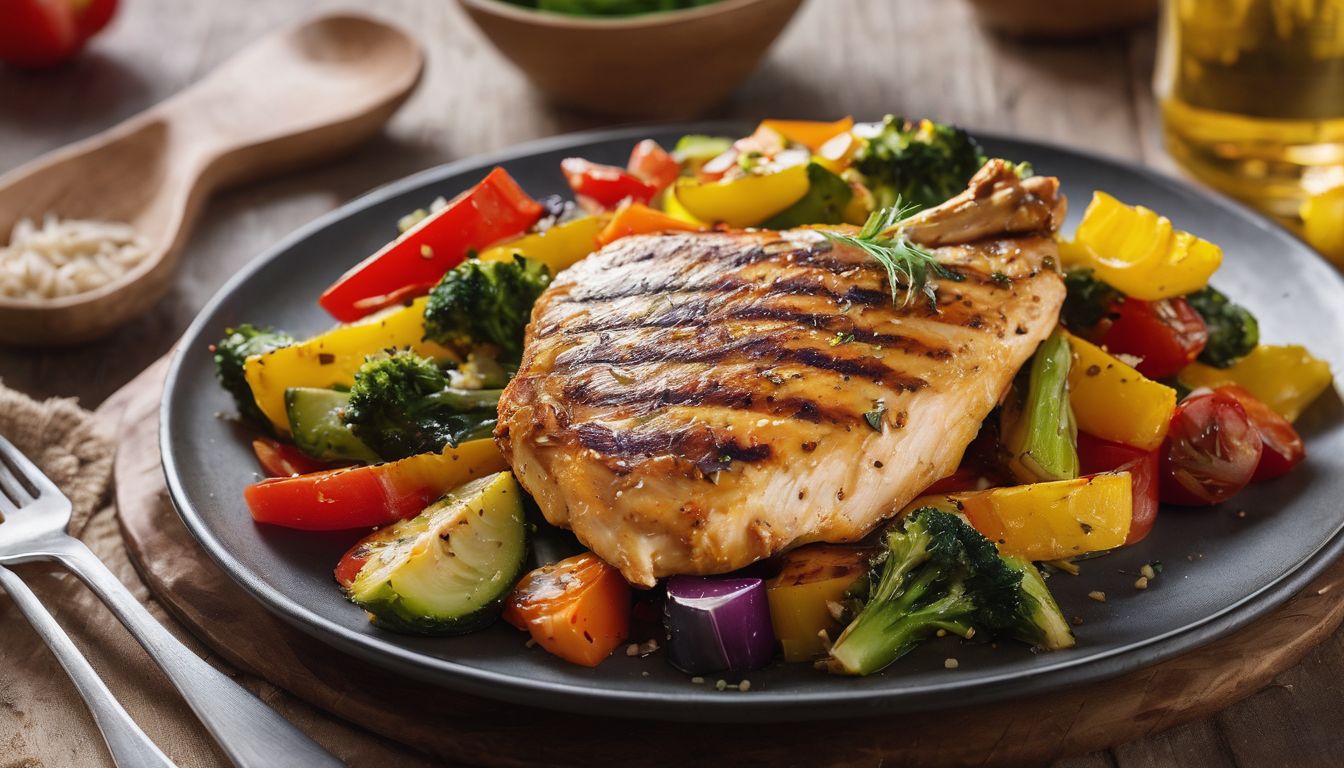

Struggling to find a lean, protein-packed addition to your diet? You may be surprised to learn that chicken breast is one of the most nutritious meats available. This article will dive deep into its nutritional values and health benefits like maintaining muscle mass and strengthening bones.
Ready for some food facts that can transform your meals? Stick around!
Key Takeaways
- Chicken breast is a low-calorie and low-carbohydrate food, making it suitable for weight loss and low-carb diets.
- It is packed with high – quality protein, essential for muscle growth and repair.
- Chicken breast contains important vitamins and minerals that support overall health, such as B vitamins, phosphorus, selenium, and zinc.
- Including chicken breast in your diet can help strengthen bones and promote better mood regulation and sleep.
Chicken Breast Nutrition Facts
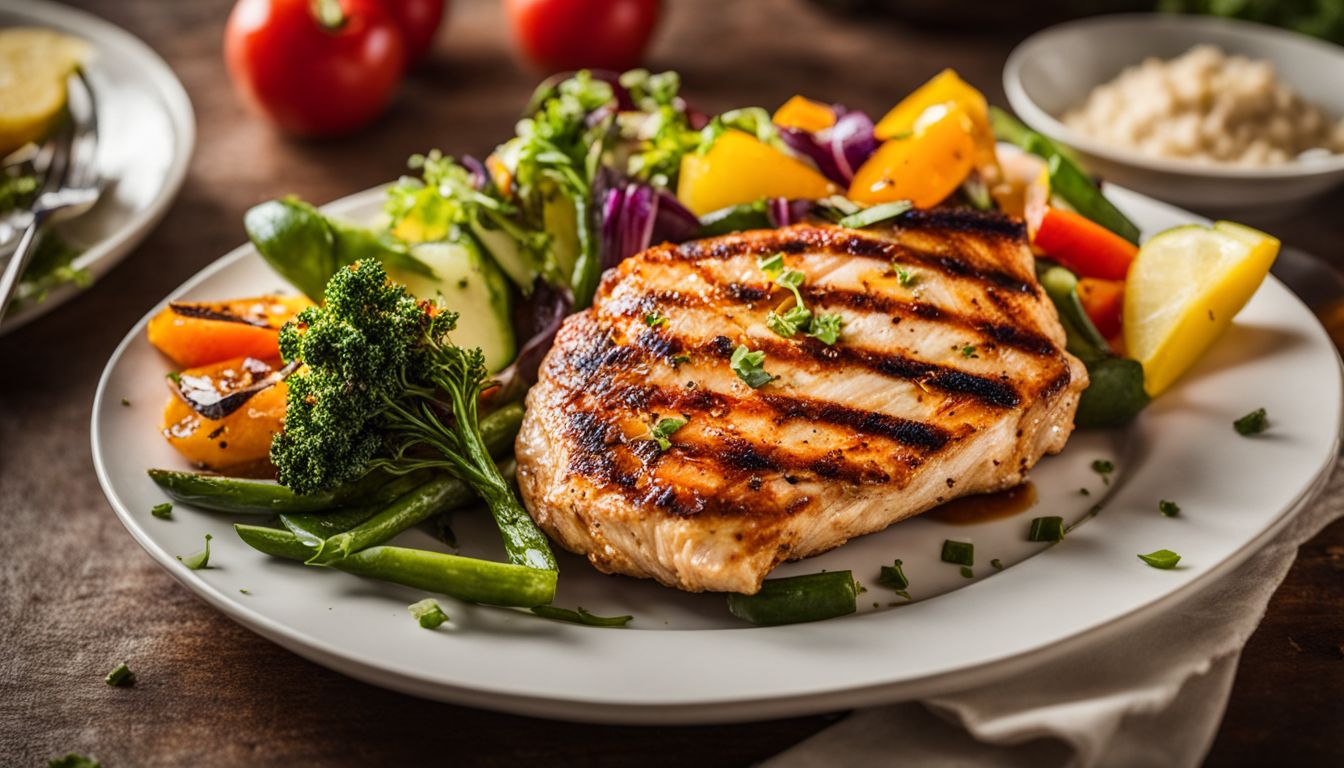
Chicken breast is packed with essential nutrients, making it a healthy addition to your diet.
Calories
Chicken breast is a powerhouse of nutrients boasting a low calorie count. A skinless, cooked chicken breast weighing around 3 ounces carries just approximately 165 calories. Most of these calories come from protein, making it an ideal choice for anyone aiming to keep their calorie intake low while ensuring they meet their daily nutritional needs.
This makes chicken breast versatile in various diet plans — from weight loss regimes to muscle-building programs. Plus, unlike red meat and other proteins commonly consumed, chicken breasts contain fewer saturated fats contributing to its lower caloric content.
Carbohydrates
Chicken breasts are low in carbohydrates, making them an excellent choice for those following a low-carb or ketogenic diet. One of the key nutritional facts about chicken breast is that it contains less than 1 gram of carbs per 3.5 ounces (100 grams), according to USDA data.
This makes it a perfect addition to meals where you want to limit carb intake such as at dinner.
The lack of carbs in chicken breast signifies that most of the energy in this poultry comes from protein and a small amount from fats. This nutrient composition supports weight loss efforts by providing satiety without causing sudden spikes or drops in blood sugar levels which commonly occur after consuming high-carb foods.
Despite its low carbohydrate content, chicken breast does not compromise on taste and can be cooked into numerous delicious meals while still fitting within dietary limitations.
Fats
Chicken breast is known for its low fat content, making it a great choice for those looking to reduce their fat intake. Despite being lean, it contains healthy monounsaturated and polyunsaturated fats.
These beneficial fats help lower bad cholesterol levels while increasing good cholesterol in the body. Plus, they play a vital role in brain function and the absorption of certain vitamins.
Keep in mind that preparation methods can change the fat content significantly; grilling or baking chicken breast without skin keeps the fat count down compared to frying or using heavy sauces during cooking.
Healthy choices like these ensure you are getting all the nutritional benefits without excessive calories from unhealthy fats.
Protein
Protein is a crucial nutrient found in chicken breast that plays a vital role in our bodies. It helps build and repair tissues, supports muscle growth, and aids in the production of enzymes and hormones.
Consuming protein-rich foods like chicken breast can help you feel fuller for longer periods, which may assist with weight management by reducing appetite. Additionally, protein contributes to stronger bones and can positively impact serotonin and melatonin levels, promoting better mood regulation and quality sleep.
Including chicken breast as part of your diet provides an excellent source of high-quality protein to support your overall health and wellness goals.
Vitamins and Minerals
Chicken breast is not only a great source of protein but also contains essential vitamins and minerals that are beneficial for overall health. It is rich in B vitamins such as niacin, which supports energy production, and vitamin B6, which plays a role in brain development and function.
Additionally, chicken breast provides important minerals like phosphorus for strong bones and teeth, selenium for immune system support, and zinc for wound healing. Including chicken breast in your diet can help ensure you get these vital nutrients to support your body’s functions.
Health Benefits of Chicken Breast
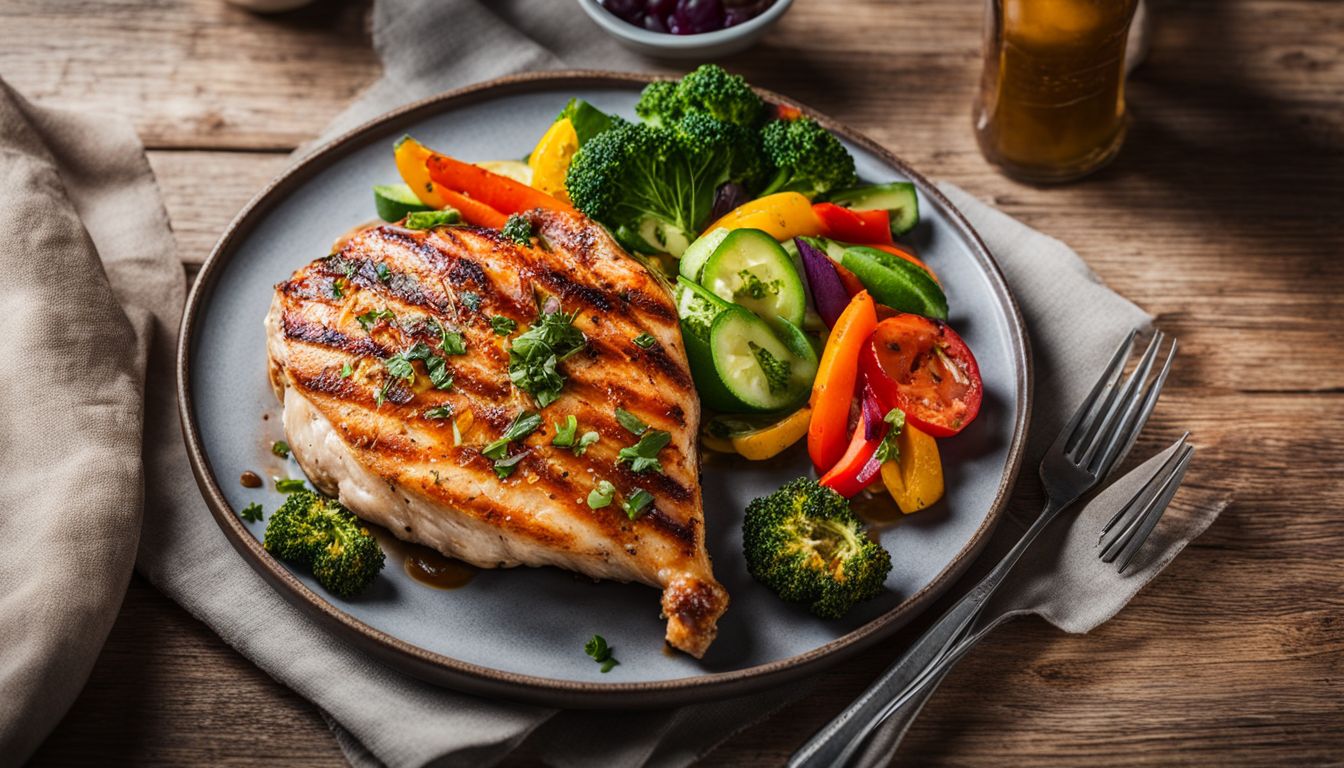
Chicken breast offers a range of health benefits, including building and maintaining muscle mass, strengthening bones, reducing appetite, and boosting serotonin and melatonin levels.
Builds and maintains muscle mass
Chicken breast is an excellent source of protein, which is essential for building and maintaining muscle mass. Protein is made up of amino acids, which are the building blocks of muscles.
When we consume chicken breast, the body breaks down the protein into amino acids and uses them to repair and rebuild damaged muscle tissue. This process helps in increasing muscle mass and strength over time.
Including chicken breast in your diet can help support your fitness goals and promote healthy muscle development.
Strengthens bones
Chicken breast is not only a delicious addition to your diet but also provides several health benefits, including strengthening bones. This is because chicken breast is rich in protein and essential nutrients like calcium, phosphorus, and magnesium – all of which are necessary for maintaining strong and healthy bones.
Including chicken breast in your meals regularly can help support bone density and reduce the risk of osteoporosis. So next time you’re meal planning, consider incorporating chicken breast to promote optimal bone health.
Reduces appetite
Chicken breast is not only a lean source of protein, but it can also help reduce appetite. This is due to its high protein content, which helps increase feelings of fullness and satiety.
When you consume chicken breast as part of your meals, it can help curb cravings and prevent overeating. By reducing appetite, chicken breast can support weight management goals and promote overall healthier eating habits.
So if you’re looking for a satisfying and nutritious option that keeps you feeling satisfied for longer periods of time, include chicken breast in your diet.
Boosts serotonin and melatonin levels
Chicken breast is not only delicious but also beneficial for boosting serotonin and melatonin levels in the body. These neurotransmitters play crucial roles in regulating mood, sleep, and overall well-being.
By consuming chicken breast regularly, you can increase the production of serotonin and melatonin, which may help improve your mood, reduce stress, and promote better sleep. So next time you’re looking for a healthy way to enhance your serotonin and melatonin levels naturally, consider adding chicken breast to your diet.
Allergies and potential adverse effects
Chicken breast is generally considered safe and well-tolerated by most people. However, it can cause allergies and potential adverse effects in some individuals. Allergies to chicken are rare but possible, with symptoms ranging from mild itching or hives to more severe reactions like difficulty breathing or anaphylaxis.
Other adverse effects may include gastrointestinal issues such as nausea, vomiting, or diarrhea due to improper preparation or food poisoning from consuming undercooked chicken. It’s important to handle and cook chicken properly to minimize the risk of these adverse effects.
Varieties, Storage, and Preparation
There are various types of chicken breast available, including boneless, skinless, tenderloin, and with rib meat. It is important to store chicken breast properly in the refrigerator or freezer to prevent spoilage and maintain food safety.
When preparing chicken breast, it is recommended to choose healthy cooking methods such as grilling or baking rather than frying. Additionally, knowing the recommended daily protein intake and understanding the protein content in different cuts of chicken can help you incorporate it into your diet effectively.
Different types of chicken breast
Chicken breast comes in various cuts and forms, making it versatile for different recipes and preferences. Here are the different types of chicken breast:
- Boneless, skinless chicken breast: This is the most common type, often used in grilled or baked dishes for a lean protein option.
- Chicken breast tenderloins: These are smaller strips of meat that cook quickly and are perfect for stir-fries or salads.
- Thin-sliced chicken breast: These thinly cut pieces cook faster and work well for sandwiches or pan-frying.
- Ground chicken breast: Ground chicken can be used as a substitute for ground beef in recipes such as burgers or meatballs.
- Chicken breast with bone-in: This type of chicken breast retains more moisture when cooked, making it ideal for roasting or braising.
Proper storage and food safety guidelines
Store chicken breast properly to ensure freshness and prevent foodborne illnesses. Follow these guidelines:
- Keep chicken breast refrigerated at or below 40°F (4°C) to slow bacterial growth.
- Store raw chicken breast on a tray or in a container to prevent cross – contamination.
- Use or freeze fresh chicken breast within 1 – 2 days of purchase.
- If freezing, wrap chicken breast tightly in plastic wrap or freezer bags to maintain quality.
- Thaw frozen chicken breast in the refrigerator or using the defrost function on your microwave. Cook immediately after thawing.
- Cook chicken breast to an internal temperature of 165°F (74°C) to kill harmful bacteria.
- Avoid reusing marinades that have come into contact with raw chicken breast.
- Wash hands, utensils, and surfaces thoroughly with soap and water after handling raw chicken breast.
How to prepare chicken breast in a healthy manner
Preparing chicken breast in a healthy manner is key to maximizing its nutritional benefits. Here are some tips:
- Marinate the chicken breast in a mixture of herbs, spices, and citrus juices to enhance its flavor without adding extra calories or unhealthy ingredients.
- Opt for cooking methods like grilling, baking, or broiling instead of frying to reduce the amount of added fats and oils.
- Use non – stick pans or cooking sprays to minimize the need for excessive amounts of oil.
- Season your chicken breast with herbs, spices, and low – sodium marinades instead of salt to limit your sodium intake.
- Cook the chicken until it reaches an internal temperature of 165°F (74°C) to ensure that it is thoroughly cooked and safe to eat.
- Serve your chicken breast with a variety of colorful vegetables and whole grains for a well – rounded and nutritious meal.
- Avoid adding high – calorie sauces or dressings that can negate the health benefits of the chicken breast.
Recommended daily protein intake and protein content in different cuts of chicken
The USDA recommends a daily protein intake of around 46 grams for women and 56 grams for men. Different cuts of chicken have varying protein contents which can contribute to achieving this daily intake. Below is a detailed table comparing the protein content in different cuts of chicken.
| Chicken Cut | Protein Content (Per 100g) |
|---|---|
| Chicken Breast (Skinless) | 31g |
| Chicken Thigh (Skinless) | 26g |
| Chicken Drumstick (Skinless) | 20g |
| Chicken Wing (Skinless) | 25g |
This makes chicken, especially the breast portion, an excellent source of protein, making it a central part of a healthy diet.
Conclusion
Chicken breast is a nutritious and healthy addition to any diet. With its low calorie and carbohydrate content, high protein content, and abundance of vitamins and minerals, it offers numerous health benefits.
From building muscle mass to boosting serotonin levels, chicken breast is a versatile ingredient that can be enjoyed in various ways while supporting your overall well-being. Make sure to include it in your regular meals for a balanced diet and optimal nutrition.
FAQs
1. What is the nutritional value of a 5 oz grilled chicken breast?
A 5 oz grilled chicken breast provides essential nutrients including protein, vitamins and minerals, but its exact nutritional content may vary based on cooking methods and brand specifics.
2. How does fried chicken breast nutrition compare to roasted or grilled?
Fried chicken breasts are often higher in calories and fat compared to roasted or grilled ones due to the additional oil used during frying.
3. Can you explain Kirkland’s Costco rotisserie chicken breast nutrition facts?
Kirkland’s Costco Rotisserie Chicken Breast gives important nutrients like proteins with other elements like fats and carbs; however, the precise values depend on various factors such as ingredient origins and preparation techniques.
4. Can I receive adequate nutrition from eating canned or frozen chicken breasts?
Yes, both canned and frozen varieties contain valuable dietary elements such as protein; however, one must be mindful of sodium levels often found in processed foods.
5. Are there differences between deli-style Boar’s Head Chicken Breast Nutrition versus Tyson Boneless Skinless Chicken Breast Nutrition?
Both brands provide high-quality protein sources yet subtle variations may exist per their unique recipes leading to slightly differing nutritional profiles.
6. Is there a difference in nutrition when comparing bone-in vs boneless skinless meat from Perdue’s Chicken Breasts?
While both versions maintain good nutrient levels predominantly protein, slight distinctions could arise depending on whether skin was left during cooking thereby possibly increasing the fat content parameter.

Author
Years ago, the spark of my life’s passion ignited in my mind the moment I stepped into the local gym for the first time. The inaugural bead of perspiration, the initial endeavor, the very first surge of endorphins, and a sense of pride that washed over me post-workout marked the beginning of my deep-seated interest in strength sports, fitness, and sports nutrition. This very curiosity blossomed rapidly into a profound fascination, propelling me to earn a Master’s degree in Physical Education from the Academy of Physical Education in Krakow, followed by a Sports Manager diploma from the Jagiellonian University. My journey of growth led me to gain more specialized qualifications, such as being a certified personal trainer with a focus on sports dietetics, a lifeguard, and an instructor for wellness and corrective gymnastics. Theoretical knowledge paired seamlessly with practical experience, reinforcing my belief that the transformation of individuals under my guidance was also a reflection of my personal growth. This belief holds true even today. Each day, I strive to push the boundaries and explore new realms. These realms gently elevate me to greater heights. The unique combination of passion for my field and the continuous quest for growth fuels my drive to break new ground.





